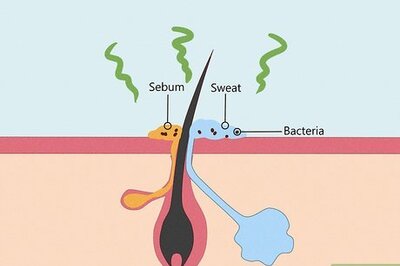
views
The history of human rights dates back to ancient civilisations, where laws were written to include principles of justice, fairness, and protection. However, these laws weren’t universal. In fact, it wasn’t until after the end of WWII that the Universal Declaration of Human Rights was adopted by the United Nations in 1948.
According to the UN Human Rights Office of the High Commissioner (UN OHCHR), access to safe drinking water and sanitation are internationally recognised human rights, derived from the right to an adequate standard of living under Article 11(1) of the International Covenant on Economic, Social and Cultural Rights.
By declaring something a ‘human right’, it becomes a legal entitlement rather than a commodity or service provided on a charitable basis. For marginalised communities worldwide, this often translates into accelerated access, and more representation in the decision making process.
In India, the right to sanitation is a critical issue that affects various demographics, particularly women, children, and the poor.
The Impact of Clean and Safe Toilets on Children’s Health
The lack of access to safe and hygienic toilets has been linked to malnutrition, stunting, and other health problems, especially among children. Diarrhoea is one of the leading causes of death among children under 5 years old, killing about 525,000 children every year. Diarrhoea is caused by ingesting faecal matter by way of adulterated food or contaminated water. Faecal matter is full of pathogens such as bacteria, viruses or parasites and diarrhoea can lead to dehydration, which can cause complications such as shock, organ failure or death if not treated promptly.
Children who lack access to clean toilets are also at higher risk for malnutrition and stunting. Malnutrition can be caused by poor diet, poor absorption of nutrients due to diarrhoea or intestinal worms, or loss of appetite due to illness. Malnutrition can lead to stunting, which is a condition where children are too short for their age. Stunting can affect children’s physical and cognitive development, as well as their immunity and susceptibility to infections. When children have to use dirty toilets, they are also exposed to other pathogens that can cause infections and diseases such as dysentery, typhoid, hepatitis, urinary tract infections, worm infestations and skin infections.
On the flipside, when children have access to clean and safe toilets, and are taught to practise toilet hygiene, they are sick less often. Less sick days translate into better performance at school and better health overall.
The Impact of Clean and Safe Toilets on the Health of Women and Gender Diverse Individuals
For women who don’t have access to a toilet, safety is an ever present concern when needing to go to the fields. They have to limit themselves to times of the day when they are least likely to be seen, which can mean that there is no one around to help, if they are attacked physically or sexually.
Women who use community bathrooms (especially those that aren’t cleaned or maintained regularly) also tend to ‘hold it’ more often, putting unnecessary strain on their internal organs. They also tend to hydrate less, to minimise trips to the toilet. Moreover, during their menses, women are far more susceptible to infections caught in dirty toilets. In general, it is much easier for women to catch urinary tract infections from dirty toilets because a woman’s urethra (the tube from the bladder to where the urine comes out of the body) is shorter than a man’s. This makes it easier for bacteria to get into the bladder.
For people who are gender diverse, these risks are further amplified because of bias, discrimination and phobia. People who identify as transgender or intersex are also often subjected to experiences that the rest of us never have to face: they are often derided, misgendered or attacked based on their attire or appearance. Gender diverse people too, tend to hold it, and restrict their intake of food and water, causing many of these individuals to suffer from nutritional deficiencies and gastrointestinal issues.
When women and gender non-conforming individuals have access to clean and safe toilets, it takes away a very basic barrier to entry in education, at the workplace and in their ability to participate in public life. How much further and faster would India progress if we could create the basic conditions for women and gender non-conforming individuals to thrive?
The Impact of Clean and Safe Toilets on Education and Productivity
For the larger community too, poor sanitation, poor toilet habits and low hygiene can have a significant impact on productivity, as workers need to take time off due to illness or when caring for sick family members. According to the World Bank, poor sanitation costs the global economy $260 billion per year in lost productivity.
Of course, these effects are felt disproportionately amongst poorer communities who are often the first to fall prey to disease outbreaks. Lacking access to clean water and toilets, these communities often lose more days to disease, in addition to the double whammy of having to pay for medical care.
Seen from this lens, one of the biggest investments a society can make is good sanitation. Under the Swachh Bharat Mission, millions of toilets were constructed all over India, ensuring that no Indian is left behind. However, access is just half the solution. The Sub-Group of Chief Ministers on Swachh Bharat Mission maintains that behavioural change is an area of continued focus, and has made several recommendations on how to bring about this shift in mindsets.
Many hands can make light work, especially when it comes to the work of continuous and effective communication on important issues. Harpic, India’s leading brand in the lavatory care category, decided to take the lead in the sanitation and hygiene movement by creating innovative, thought provoking campaigns and outreach programs.
Harpic, together with News18, also created the Mission Swachhta aur Paani initiative 3 years ago. It is a movement that upholds the cause of inclusive sanitation where everyone has access to clean toilets. Mission Swachhta aur Paani advocates equality for all genders, abilities, castes and classes and strongly believes that clean toilets are a shared responsibility.
For 3 years now, Mission Swachhta aur Paani has brought together the right stakeholders on a common platform, so that issues of importance can be discussed, and solutions found. These stakeholders include government officials, municipalities, NGOs, activists, grassroots organisations, sanitation workers and affected communities. It also functions as a repository for information on a vast variety of topics surrounding toilet access, toilet hygiene, and how to help improve toilet access and toilet habits across the board.
Sanitation is a human right, and the Swachh Bharat Mission has done the heavy lifting by creating the infrastructure needed: we all have access to toilets. Now, the need of the hour is conversations with the people whose lives you touch. Join us here, to learn how you can help bring about a more Swasth and Swachh Bharat.



















Comments
0 comment